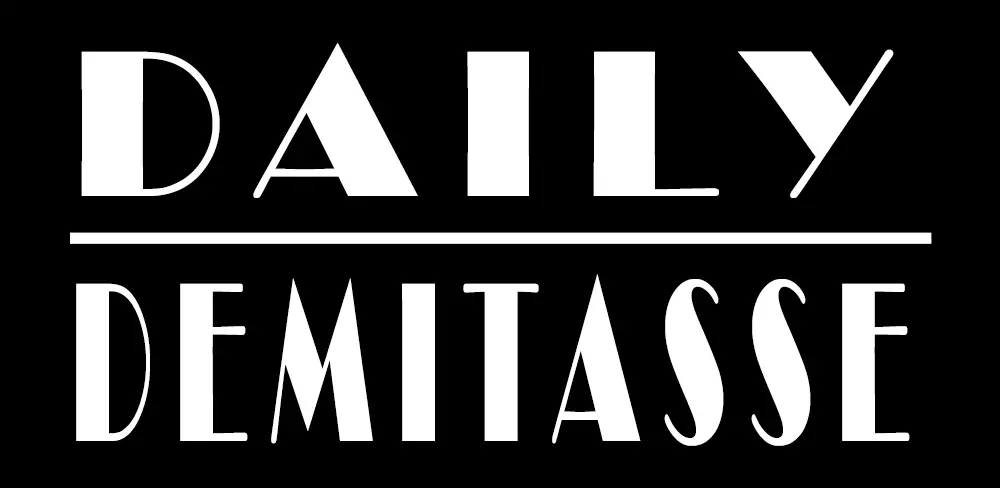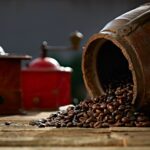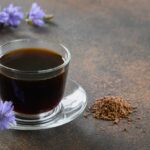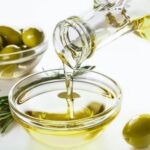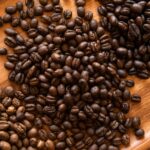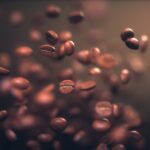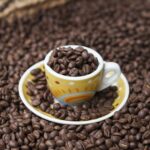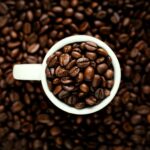Table of Contents
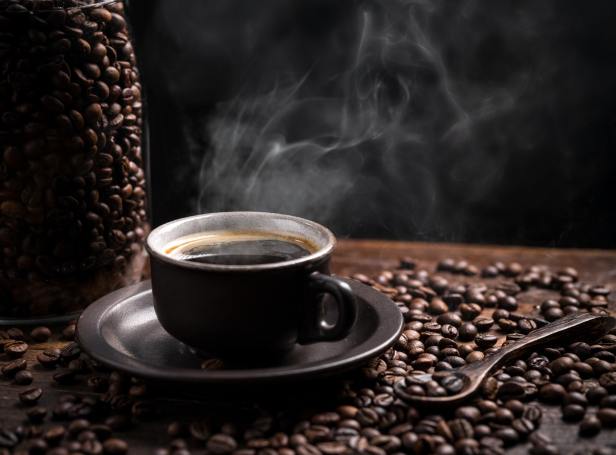
How to Make Coffee, Perfect Coffee
Coffee is one of the most popular beverages in the world, enjoyed by millions of people every day. For many, it’s an essential part of their morning routine, providing a much-needed boost of energy to start the day. But making a great cup of coffee isn’t just about getting a caffeine fix – it’s an art form. There’s a certain satisfaction that comes from brewing the perfect cup of coffee, one that’s rich, flavorful, and perfectly balanced.
In this blog post, we’ll be sharing tips and tricks on how to make the perfect cup of coffee. Whether you’re a coffee novice or a seasoned barista, this post will provide valuable insights that will help you elevate your coffee game. From choosing the right coffee beans to selecting the perfect brewing method, we’ll cover everything you need to know to make a great cup of coffee. So sit back, grab a mug, and let’s get started!
Would you rather have Cold Brew? Check out this post!
Coffee Beans
The quality of your coffee beans is the foundation of a great cup of coffee. There are two main types of coffee beans: Arabica and Robusta. Arabica beans are considered to be of higher quality and have a more complex flavor profile than Robusta beans. However, Robusta beans have a higher caffeine content and are often used in espresso blends.
When choosing coffee beans, it’s important to look for freshly roasted beans. Coffee beans start to lose their flavor soon after they’re roasted, so it’s best to buy them from a reputable roaster who roasts their beans frequently. Look for beans with a roast date that’s no more than two weeks old.
RoZark Hills Coffee Roasterie, a fantastic local coffee roaster, offers freshly roasted coffee that delivers the best flavor. Sourcing your coffee from a roaster like RoZark Hills guarantees you coffee beans that haven’t been roasted months ago, ensuring the freshness and quality of your coffee.
Coffee beans also come in different flavor profiles, depending on where they’re grown and how they’re roasted. Some beans have a fruity or floral flavor, while others have a more nutty or chocolatey taste. Experiment with different beans to find the flavor profile that you prefer.
Coffee Brewing Methods
There are several different methods for brewing coffee, each with its unique flavor profile. The most common methods include drip coffee, pour-over, French press, and espresso.
Drip coffee is the most popular method and involves pouring hot water over ground coffee beans in a filter. The water drips through the coffee and into a pot or carafe. This method produces a mild, smooth flavor and is perfect for those who prefer a classic cup of coffee.
Pour-over involves pouring hot water over ground coffee beans in a filter that’s placed in a funnel. The water is poured in a slow, steady stream, which allows the coffee to extract slowly. This method produces a more complex, flavorful cup of coffee and is often used by coffee connoisseurs.
French press involves steeping ground coffee beans in hot water and then pressing the coffee through a mesh filter. This method produces a bold, rich flavor and is perfect for those who prefer a stronger cup of coffee.
Espresso is a concentrated form of coffee that’s made by forcing hot water through finely-ground coffee beans. This method produces a strong, rich flavor and is the base for many coffee drinks such as lattes and cappuccinos.
Each brewing method has its advantages and disadvantages, and the flavor of the coffee can be affected by the brewing time, water temperature, and grind size. Experiment with different methods to find the one that produces your perfect cup of coffee.
Grind Size and Water Temperature
The grind size and water temperature are crucial factors in making a great cup of coffee. The grind size refers to the coarseness or fineness of the coffee grounds. The grind size affects the rate of extraction, with finer grounds extracting more quickly than coarser grounds. Different brewing methods require different grind sizes, so it’s important to choose the right size for your brewing method.
Water temperature is also important because it affects the rate of extraction and the flavor of the coffee. Water that’s too hot can over-extract the coffee, resulting in a bitter taste, while water that’s too cold can under-extract the coffee, resulting in a sour taste.
As a general rule, the ideal water temperature for brewing coffee is between 195°F and 205°F. Use a thermometer to ensure that the water is within this temperature range.
The grind size and water temperature can be adjusted to achieve the desired flavor profile. If the coffee is too weak, try using a finer grind or hotter water. If the coffee is too strong or bitter, try using a coarser grind or cooler water. Experiment with different variables to find the perfect balance for your taste.
It’s important to note that different coffee beans and brewing methods may require different grind sizes and water temperatures. For example, pour-over coffee typically requires a finer grind and slightly cooler water temperature than drip coffee. Espresso requires an extremely fine grind and high water pressure to extract properly.
Investing in a quality grinder can make a significant difference in the taste of your coffee. Burr grinders are recommended as they provide a consistent grind size, which is essential for a balanced extraction. Blade grinders can produce uneven particle sizes, which can result in an inconsistent flavor.
In addition to the water temperature and grind size, the ratio of coffee to water is also important. A general guideline is to use two tablespoons of coffee for every six ounces of water. However, this can be adjusted based on personal preference.
By paying attention to the grind size, water temperature, and coffee-to-water ratio, you can ensure that you’re brewing a great cup of coffee every time.

Coffee Accessories
Using quality coffee accessories can make a big difference in the taste and overall experience of your coffee. Here are a few accessories to consider:
Scale: Using a scale to weigh your coffee and water can help you achieve the perfect coffee-to-water ratio. This ensures that you’re not using too much or too little coffee, which can affect the flavor.
Kettle: A gooseneck kettle with a narrow spout is ideal for pour-over coffee as it allows for better control over the flow of water. This can help ensure a consistent extraction and a balanced flavor.
Filter: Choosing the right filter for your brewing method is important as it can affect the flavor of the coffee. Paper filters are the most common, but some people prefer metal filters as they allow more oils and sediment to pass through, resulting in a fuller flavor.
Mug: Using a quality mug can enhance the overall coffee-drinking experience. Look for a mug that’s the right size for your coffee and has a comfortable handle and a thickness that retains heat.
Grinder: As mentioned earlier, investing in a quality grinder can make a big difference in the taste of your coffee. Burr grinders are recommended as they provide a consistent grind size, which is essential for a balanced extraction. Try out this coffee grinder!
By using these accessories, you can ensure that you’re brewing a quality cup of coffee that’s full of flavor and has a great mouthfeel.
Troubleshooting
Despite your best efforts, sometimes your coffee may not turn out the way you want it to. Here are some common problems and solutions:
Over-extraction: If your coffee tastes bitter, it may be over-extracted. This means that the water has extracted too much of the coffee, resulting in a bitter taste. Try using a coarser grind, cooler water, or a shorter brew time to prevent over-extraction.
Under-extraction: If your coffee tastes sour or weak, it may be under-extracted. This means that the water hasn’t extracted enough of the coffee, resulting in a sour or weak taste. Try using a finer grind, hotter water, or a longer brew time to extract more flavor.
Bad beans: If your coffee tastes stale or off, it may be due to bad beans. Make sure you’re using freshly roasted beans that are no more than two weeks old. Store your beans in an airtight container away from light and heat to keep them fresh.
Poor water quality: If your coffee tastes off, it may be due to poor water quality. Use filtered or bottled water to ensure that your coffee tastes clean and fresh.
Dirty equipment: If your coffee tastes off, it may be due to dirty equipment. Make sure to clean your equipment regularly to prevent buildup that can affect the taste of your coffee.
By troubleshooting these common problems, you can ensure that you’re brewing a great cup of coffee every time.
Making Coffee
Making a great cup of coffee is a combination of science and art. By paying attention to the details, such as the coffee beans, brewing method, grind size, water temperature, and accessories, you can achieve a cup of coffee that’s full of flavor and perfectly balanced.
Experiment with different variables and don’t be afraid to try new brewing methods and coffee beans. Making coffee is a personal experience, and what works for one person may not work for another. With a little practice and patience, you’ll find the perfect cup of coffee that’s just right for you.
So next time you brew a cup of coffee, take your time and enjoy the process. Whether it’s a morning pick-me-up or an afternoon treat, a great cup of coffee can make any day better.
Daily Demitasse is a participant in the Amazon Services LLC Associates Program, an affiliate advertising program designed to provide a means for sites to earn advertising fees by advertising and linking to Amazon.com. We also participate in other affiliate programs which compensate us for referring traffic.
